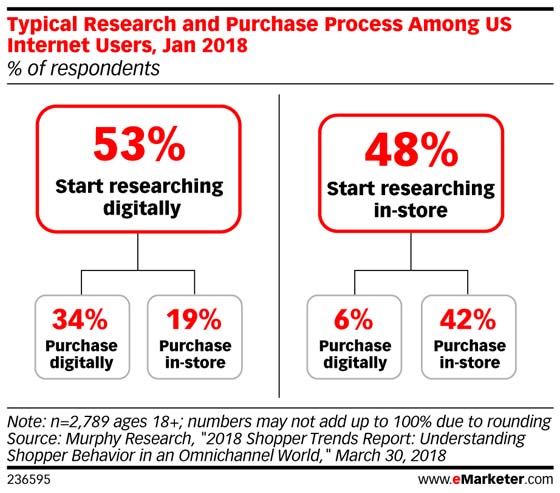Originally posted by AW360 on 9/18 here.
In an ever-noisier media environment, brands need to make their advertising campaigns stand out. It’s essential to develop messaging that not only resonates with a target audience, but also reaches them at the right point in their consumer journey. With today’s consumers engaging with content via many different channels, brands must understand how to measure and optimize those interactions. By doing so, brands can create the best possible user experience for their consumers, which in turn will increase their likelihood of conversion.
Connecting Online with Offline
It’s no secret that the consumer journey is no longer linear. A consumer may view an ad for a product on a connected TV, look up the product on a phone, and then purchase that product in-store. In this way, it’s essential for brands to understand how consumers interact with them and where those touch-points occur, especially in the offline world.
Despite the growing popularity of e-commerce, consumers are still shopping in stores. According to eMarketer, in-store purchases still dominate — in a typical month, 69% of US internet users bought something in a brick-and-mortar store, while 22% purchased online and 9% bought something online for in-store pickup.
 Yet no longer can the offline world exist in a vacuum. Per Forrester Research, half of all retail sales in the US are digitally influenced, meaning that a consumer used a digital device before or during the shopping trip. Given this significant stat, it’s more important than ever that brands develop a cross-channel advertising approach and be able to connect online with offline data. Doing so will enable brands to get better insights on consumer patterns to ultimately provide them with a better user experience.
Yet no longer can the offline world exist in a vacuum. Per Forrester Research, half of all retail sales in the US are digitally influenced, meaning that a consumer used a digital device before or during the shopping trip. Given this significant stat, it’s more important than ever that brands develop a cross-channel advertising approach and be able to connect online with offline data. Doing so will enable brands to get better insights on consumer patterns to ultimately provide them with a better user experience.
Measuring Cross-Channel Advertising and TV
The key piece of cross-channel advertising measurement is offline data — or where consumers actually shop. After all, it’s impossible for brands to understand the impact of their cross-channel campaigns without considering the impact it has on driving in-store visits. Visits are crucial because they can produce significant insights into consumer shopping and buying preferences. For example, some consumers visit multiple stores before making a purchase, while others research items in-store and then purchase online. Location Intelligence gives advertisers the additional insights needed to measure if advertising influenced visits and then allows them to shift their media planning and buying strategies to better reflect the consumer buying journey.
In this respect, location intelligence can help brands connect the dots by measuring the effect that cross-channel campaigns have on store visits. By understanding the extent to which their campaigns are driving visits, brands gain a direct metric to measure the success of their cross-channel campaigns.
Advanced TV advertising spend is poised to nearly double in 2018 and hit 8.2 billion, because advertisers have the ability to measure its effectiveness and ROI. Footfall attribution does exactly that, enabling brands to measure the efficacy of TV against other channels, so they can develop the optimal media mix for dollars spent.
Take Advantage of New Technologies to Deliver Better Ad Experiences and Optimize Cross-Channel Advertising Based on Consumer Actions
In today’s advertising ecosystem, for advertisers to succeed, they must do so by evolving through innovation, smarter marketing, and finding strategic partners. But one easy way to improve brand equity through better advertising experiences is by leveraging real-time offline insights. If brands are not seeing results with their cross-channel campaigns, they can’t modify their advertising accordingly to improve the user experience. With so many new advancements in technology, there are turnkey solutions that offer immediate solutions — one in particular, real-time optimization based on store visits. With this metric, brands can optimize campaigns while they’re still in flight based on in-store visits, adjusting them as needed to the response of their consumers.
For example, if a brand sees that consumers are not responding well to a certain ad, they might refine the messaging, serve the ad on a different platform, or increase the frequency of targeting to align with consumer preferences and A/B test in real time to see if that change is driving store visits.
With addressable TV, brands can also target specific audience segments with ads tailored to their preferences. In terms of optimization, brands can then refine those ads served on connected TV in real-time. Brands can also leverage these new insights and newfound advanced audience segments for their traditional TV investments as well.
Brands can pair their knowledge of how consumers respond to ads with consumer insights gleaned from online and offline data to maximize the success of their advertising campaigns. In the end, it all comes down to understanding consumers and creating an advertising experience that resonates with them.




